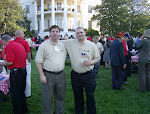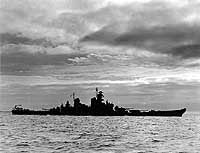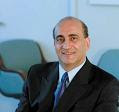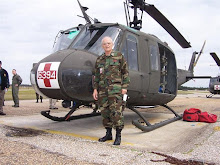

USS Philadelphia V
--------------------------------------------
 A note from Radarsite: Unfortunately, the treasures of history are fragile bequests. Had it not been for my chance encounter with 86 year old ex-Seaman Anthony L. Simone in the laundry room of the apartment complex we share, the illustrious and action-packed career of the WWII light cruiser USS Philadelphia V might, for all intents and purposes, have been lost to all but the most ardent naval historians. And that would be a travesty of justice. For me, the heroic exploits of this fine ship and her loyal crew symbolize the courageous actions of all of our fine American WWII troops, all over the world. Unfortunately, these noble warriors are fast becoming a dying breed. Like so many similar remembrances, this great epic saga has, over the years, been reduced to a handful of all but anonymous family histories, built around these precious but all-too-fragile personal memories. And if we're not careful, if we don't personally take the time to record these precious WWII memories, then these fascinating personal stories, and the greater histories which they entail, will be lost to us forever. Here, thankfully, is one that didn't get away. I feel humbled and honored to be able to bring to you this exclusive Radarsite interview with my friend, ex-Seaman Anthony L. Simone.
A note from Radarsite: Unfortunately, the treasures of history are fragile bequests. Had it not been for my chance encounter with 86 year old ex-Seaman Anthony L. Simone in the laundry room of the apartment complex we share, the illustrious and action-packed career of the WWII light cruiser USS Philadelphia V might, for all intents and purposes, have been lost to all but the most ardent naval historians. And that would be a travesty of justice. For me, the heroic exploits of this fine ship and her loyal crew symbolize the courageous actions of all of our fine American WWII troops, all over the world. Unfortunately, these noble warriors are fast becoming a dying breed. Like so many similar remembrances, this great epic saga has, over the years, been reduced to a handful of all but anonymous family histories, built around these precious but all-too-fragile personal memories. And if we're not careful, if we don't personally take the time to record these precious WWII memories, then these fascinating personal stories, and the greater histories which they entail, will be lost to us forever. Here, thankfully, is one that didn't get away. I feel humbled and honored to be able to bring to you this exclusive Radarsite interview with my friend, ex-Seaman Anthony L. Simone.First, the history of the ship. Then, the personal remembrances of one of her brave and highly-decorated crewmen. - rg
---------------------------------------
The fifth Philadelphia, a light cruiser, was laid down 28 May 1935 at the Philadelphia Navy Yard; launched 17 November 1936; and commissioned at Philadelphia 23 September 1937, Captain Jules James in command. After fitting out, the cruiser departed Philadelphia 3 January 1938 for shakedown in the West Indies followed by additional alterations at Philadelphia and further sea trials off the Maine coast. Philadelphia called at Charleston, S.C. 30 April 1938 and hosted President Roosevelt the first week of May for a cruise in Caribbean waters. The President debarked at Charleston 8 May and Philadelphia resumed operations with Cruiser Division 8 off the Atlantic coast. She was designated flagship of Rear Admiral F.A. Todd, Commander Cruiser Division 8 Battle Force, 27 June. In the following months she called at principal ports of the West Indies, and at New York, Boston, and Norfolk. Transiting the Panama Canal 1 June 1939, Philadelphia joined Cruiser Division 8 in San Pedro, Calif. 18 June for Pacific coastal operations. She departed Los Angeles 2 April 1940 for Pearl Harbor, where she engaged in fleet maneuvers until May 1941.
Cruiser Philadelphia stood out of Pearl Harbor 22 May 1941 to resume Atlantic operations, arriving Boston 18 June. At this point she commenced neutrality patrol operations, steaming as far south as Bermuda and as far north as Halifax, Nova Scotia. She entered Boston Navy Yard 25 November for upkeep and was in repair status there when the Japanese attacked Pearl Harbor. Eleven days after the Japanese attack, Philadelphia steamed for exercises in Casco Bay, after which she joined two destroyers for antisubmarine patrol to Argentia, Newfoundland. Returning to New York 14 February 1942, she made two escort runs to Hafnarfjordur, Iceland. She then joined units of Task Force 22 at Norfolk 16 May, departing two days later for an ASW sweep to the Panama Canal. She then returned to New York, only to depart 1 July as an escort unit for a convoy bond for Greenock, Scotland. The middle of August found her escorting a second convoy to Greenock. Returning to Norfolk, Va. 15 September, she joined Rear Admiral H. Kent Hewitt's Western Naval Task Force. This force was to land some 35,000 troops and 250 tanks of General Patton's Western Task Force at three different points on the Atlantic coast of French Morocco. Philadelphia became flagship of Rear Admiral Lyal A. Davidson, commanding the Southern Attack Group. which was to carry 6,423 troops under Major General E. N. Harmon, USA, with 108 tanks, to the landing at Safi, about 140 miles south of Casablanca.
Philadelphia's task group departed Norfolk 24 October and set course as if bound for the British Isles. The entire Western Naval Task Force, consisting of 102 ships and spanning an ocean area some 20 by 40 miles, combined 450 miles off Cape Race, Newfoundland 28 October. It was to that time, the greatest war fleet sent forth by the United States. The task force swept northward 6 November, thence changed course toward the Straits of Gibraltar. But after dark a southeasterly course was plotted towards Casablanca, and shortly before midnight of 7 November, three separate task groups closed three different points on the Moroccan coast.
Philadelphia took up its fire support station as the transports offloaded troops in the early morning darkness of 8 November. Shore batteries opened fire at 0428, and within two minutes Philadelphia joined New York (BB-34) in bombardment of Batterie Railleuse [manned by our good friends, the Vichy French!] which, with four 130mm. guns, was the strongest defense unit in the Safi area. Later in the morning, Philadelphia bombarded a battery of three 155mm. guns about three miles south of Safi. Spotter planes from the cruiser also got into the act by flying close support missions. One of Philadelphia's aircraft discovered and bombed a Vichy French submarine 9 November in the vicinity of Cape Kantin. The next day the Vichy submarine Medeuse, one of eight that had sortied from Casablanca, was sighted down by the stern and listing badly to port beached at Mazagan, north of Cape Blanco. Thought to be the same submarine previously attacked off Cape Kantin, Medeuse was again spotted by a plane from Philadelphia and was subsequently bombed.
Departing Safi 13 November, Philadelphia returned to New York 24 November. Operating from that port until 11 March 1943, she assisted in escorting two convoys to Casablanca. She then joined Rear Admiral Alan G. Kirk's Task Force 85 for training in Chesapeake Bay preparatory to the invasion of Sicily. A convoy escorted by Philadelphia and nine destroyers sortied from Norfolk, Va. 8 June 1943 and arrived Oran Algeria 22 June, where final invasion staging operations took place. The convoy stood out from Oran 5 July and arrived off the beaches of Seoglitti, Sicily shortly before midnight of 9 July Philadelphia assisted in furnishing covering bombardment as the troops of Major General Troy Middleton's 45th Infantry Division stormed ashore. By 15 July she had joined the gunfire support group off Porto Empedocle, where her guns were put to good use.
Philadelphia took departure from her gunfire support area 19 July and steamed to Algiers, where she became flagship of Rear Admiral Davidson's Support Force. This Task Force 88 was formed 27 July and given the mission of the defense of Palermo, gunfire support to the 7th Army's advance along the coast, provision of amphibious craft for "leap frog" landings behind enemy lines, and ferry duty for heavy artillery, supplies, and vehicles to relieve congestion on the railway and the single coastal road. Cruisers Philadelphia and Savannah and six destroyers entered the harbor at Palermo 30 July and the next day commenced bombardment of the batteries near San Stefano di Camatra. Action in the area of Palermo continued until 21 August, when Philadelphia steamed for Algiers.
During her operations in support of the invasion of Sicily, the cruiser had provided extensive gunfire support and, in beating off several hostile air attacks, had splashed a total of six aircraft. She touched at Oran, departing 5 September enroute Salerno. Her convoy entered the Gulf of Salerno a few hours before midnight of 8 September 1943.
Philadelphia's real work began off the Salerno beaches at 0943 the next day, when she commenced shore hombardment. When one of her scouting planes spotted 35 German tanks concealed in a thicket adjacent to Red Beach, Philadelphia's guns took them under fire and destroyed seven of them before they escaped to the rear Philadelphia narrowly evaded a glide bomb 11 September, although several of her crew were injured when the bomb exploded. While bombarding targets off Aropoli 15 September the cruiser downed one of twelve attacking planes and assisted in driving off a second air attack the same day in the vicinity of Altavilla. She downed two more hostile aircraft 17 September and cleared the gunfire support area that night, bound for Bizerte, Tunisia.
After upkeep at Gibraltar, Philadelphia departed Oran, Algeria 6 November ac part of the escort for a convoy which arrived at Hampton Roads 21 November. Philadelphia underwent overhaul at New York and then engaged in refresher training in Chesapeake waters until 19 January 1944, when she steamed from Norfolk as an escorting unit for a convoy arriving Oran, Algeria 30 January.Philadelphia joined the gunfire support ships off Anzio 14 February and provided support for the advancing ground troops through 23 May 1944. After overhaul at Malta, she joined Admiral C. F. Bryant's Task Group 85.12 at Taranto Italy. The cruiser served as one of the escorting units for the group, which reached the Gulf of St. Tropez, France 15 August. At 0640 she teamed with Texas (BB-35) and Nevada (BB-36) and, with other support ships, they closed the beaches and provided counter-battery fire. By 0815 the bombardment had destroyed enemy defenses and Major General Eagles' famed "Thunderbirds" of the 45th Army Infantry Division landed without opposition. After replenishing ammunition at Propriano, Corsica 17 August, Philadelphia provided gunfire support to the French army troops on the western outskirts of Toulon. Four days later her commanding officer, Capt. Walter A. Ansel, accepted the surrender of the fortress islands of Pomeques, Chateau D'If, and Ratonneau in the Bay of Marseilles. After gunfire support missions off Nice, she departed Naples Z0 October and returned to Philadelphia, Pa., arriving 6 November.
Philadelphia underwent overhaul at the Philadelphia Navy Yard and then refresher training in the West Indies, returning to Norfolk, Va. 4 June 1945. She steamed for Antwerp, Belgium 7 July, acting as escort for Augusta (CA-31) who had embarked President Harry S Truman and his party, including Secretary of State Byrnes and Fleet Admiral William D. Leahy. Arriving Antwerp 15 July, the President departed Augusta and was flown to the Potsdam Conference. Before the conference ended, Philadelphia proceeded to Plymouth, England to await return of the President.On 2 August 1945, Philadelphia rendered honors to King George VI, who visited President Truman in Augusta. The ships departed that same day and Philadelphia arrived Norfolk, Va. 7 August. Philadelphia stood out of Narragansett Bay for South Hampton, England 6 September, returning 25 September as escort for the former German liner Europa. After operations in Narragansett Bay and in Chesapeake Bay, she arrived Philadelphia 26 October 1945. Steaming for Le Havre, France 14 November, she embarked Army passengers for the return to New York 29 November. She made another "Magic Carpet" run from New York to Le Havre and return 5-25 December, and arrived Philadelphia for inactivation 9 January 1946. She decommissioned in the Philadelphia Navy Yard 3 February 1947. Struck from the Navy List 9 January 1951, she was sold to the government of Brazil under terms of the Mutual Defense Assistance Program. She now serves in the Brazilian Navy under the name Barroso (C-l l ).
Philadelphia received five battle stars for World War II operations.
Courtesy of the History Central.com
-------------------------------------------

Eighty-six year old Anthony L. Simone is a gentlemanly, soft-spoken, unassuming man -- a quality shared it seems with many of that Greatest Generation. Nothing in his appearance or manner would hint at the turbulent and at times terrifying years he spent aboard the dauntless cruiser USS Philadelphia at war in the Atlantic and the Mediterranean. They just don't talk about it all that much, do they?
Then-nineteen year old Anthony L. Simone, Firecontrolman Second Class (not referring to a firefighter but rather one of the crew manning the big 40 mm AA guns in one of the ship's gunnery turrets) was destined to see combat in almost every major Western theater of battle in WWII, including those infamously bloody beachheads of Africa, Sicily, Salerno and Anzio.
Like so many other patriotic young American boys, Anthony enlisted right after Pearl Harbor. It was the "right thing to do". After an incredibly short three week training course at Greenbay, Wisconsin, it was off to Norfolk and the USS Philadelphia, where they immediately joined up with the largest convey ever sent to sea, transporting the first troops of Patton's newly formed Third Army to the unwelcoming shores of Morocco and Tunisia. Living with the constant fear of submarine attacks, the Philly's crew witnessed the horrors of several of her sister ships being sunk, and many American sailors lost to the sea. Zig-zagging to avoid the predatory subs, the crew manned their stations, always on alert; on their downtime they listened to current American pop songs, brought to them, along with the usual heavy dose of Axis propaganda, by the Vichy version of Mata Hari, derisively known by them as "Dirty Girty from Bizerte". Anthony recalls the awesome but heartening sight of the sun being darkened by squadrons of Flying Fortresses overhead, on their way to deliver their greetings to the Wehrmacht.
From there it was off to Malta, then on to the shores of Sicily, where the Philadelphia underwent the heaviest attacks of the war, deadly fire from both enemy shore batteries and from the screaming sirens of the deadly Stuka dive bombers. That night Anthony recalls the bizarre and surreal sight of the black night sky suddenly being filled with thousands of shimmering strands of tinsel -- actually aluminum strips dropped by enemy aircraft to disrupt our radar. Yet somehow through all this carnage, the Philadelphia and her crew had escaped without sustaining any notable injuries. "We were the luckiest ship in the Navy," Anthony smiles.
Next, it was on to the legendary blood-soaked beaches of Anzio to supply much needed naval support for the hotly contested American landings. Anthony proudly recalls the Philadelphia being advised of seven German tanks parked under camouflage above the beach, waiting to ambush our troops. The Philly's big 40mms opened up in a perfectly directed, ear-shattering salvo that took out five of the tanks -- the other two scattered and were later destroyed.
From one climate extreme to the other, the Philadelphia was then given the unenviable task of escorting a convoy through the frigid and always dangerous waters of the North Atlantic, delivering vital war material to our then-ally Russia.
Morocco, Tunisia, Sicily, Salerno, Anzio -- the seemingly-indestructible Philadelphia and her brave crew had seen action in almost every major engagement in the West, save Normandy. And yet through it all she returned home virtually unscathed -- the luckiest ship in the Navy, indeed.
So, after all these adventures and after having faced all of these formidable dangers, what was it that the crew of the Philadelphia was most afraid of? "The ocean", Anthony replies. "The ocean and the weather were the scariest things we ever faced".
And what did Anthony and his fellow sailors think about the enemy, the Germans and the Vichy French? Did they hate them? Did they want to kill as many of them as possible?
"No", he answers thoughtfully. "They were guys just like us, doing what they had to do". He pauses for a moment and smiles. "Once we had four captured German pilots onboard. Our guys were falling all over themselves, trying to meet them and to talk to them. Funny, isn't it?"
Anthony L. Simone was aboard the USS Philadelphia, steaming home, when the news came of our atom bomb attacks on Hiroshima and Nagasaki, and the subsequent surrender of the Japanese. There is little doubt about where the Philadelphia would have been headed for next. Does anyone want to hazard a guess as to Anthony and his fellow crewmen's feelings about our having dropped the bomb on Japan?
Finally, consider this. This is but one small part of one veteran's personal memories of that monumental battle between Good and Evil which was the Second World War. The result of one chance meeting in a laundry room. How many other stories are still out there? How many still remain untold? How many will forever remain untold? Sadly, we are losing this Greatest Generation all too rapidly, and with them we are losing their unique and invaluable personal histories. We must, at the very least, do what we can to commit these family remembrances to posterity. We owe that to Anthony, we owe that to all of the Anthonys who served, and all who died, for their beloved America. - rg





























.jpg)









.jpg)




































































.jpg)

.jpg)











.jpg)



















Kilroy was here!
ReplyDeleteThanks Roger for sharing this. We forget in the study of war the indin and machine that fought the conflict.
ReplyDeleteI wonder what happened to the old girl.
My Dear Roger,
ReplyDeleteA magnificent tribute - to Anthony, to a generation, and to the human spirit as exhibited by all who humbly and heroically defend the Liberty of mankind.
You have done a great service here! And yes, we ought all do our best to record what we can of this most horrific and heroic chapter in human history.
Cheers,
Charlie
Thanks Norman. And a thank you and a big hello to Churchill's Parrot. And to Findalis -- "Struck from the Navy List 9 January 1951, she was sold to the government of Brazil under terms of the Mutual Defense Assistance Program. She now serves in the Brazilian Navy under the name Barroso (C-l l )."
ReplyDeleteThank you for such a complete and wonderful history of just one ship in the Navy. Imagine the stories out there...I hope that other people will read your story and begin to write down others to share. We need to retain these stories not only because of the history and personal events of this generation, but to assist us and other generations to understand the meaning of "honor, duty, country". Thanks.
ReplyDeleteSo many stories of bravery and heroics, lost forever to younger generations.
ReplyDeleteAmericans needs to hear of these once young men, now aging warriors, who stood up and stepped in to harm's way to keep liberties flame burning brightly.
A truly great post, Roger. A tribute not only to Anthony, but to all who put on the uniform and put their lives on hold to serve a great country.
Roger, a timely tribute to a fateful encounter. Thanks for sharing it with us. We cannot emulate what we do not remember.
ReplyDeleteWe must not forget the countless sacrifices made by these gallant warriors. Time is short, may your efforts to honor this hero, his ship and the nation that struggles even today against insidious evils, be a catalyst in the race to preserve our timeless principles.
Link to ongoing efforts to record them:
http://jscms.jrn.columbia.edu/cns/2007-04-10/twarowski-wwIIvetsremember
What a wonderful account of bravery and service to our country. I know there are many Anthony's out there, but the numbers diminish every day. It took my Dad until his 80th birthday to tell his family about his experience in the Navy during WWII. We had seen photos, knew he had been in the Philippines and elsewhere. He talked about it that one time, and then he died 7 months later.
ReplyDeleteWhat a wonderful suggestion that families and acquaintances begin writing down this history.